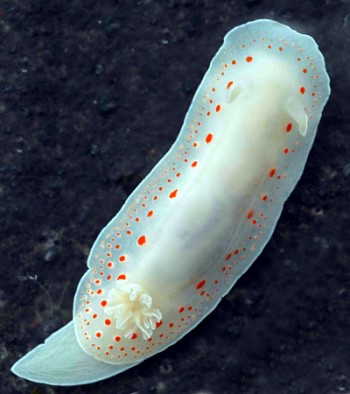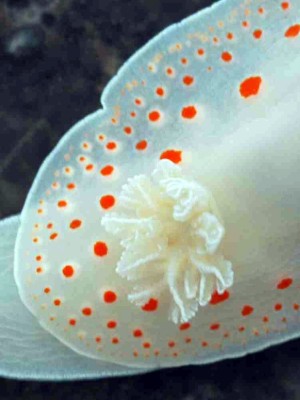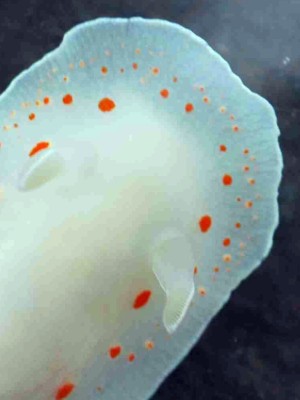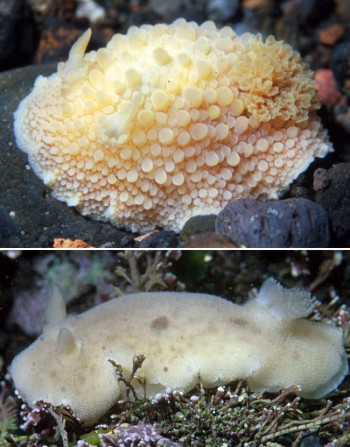Tyrinna nobilis & others from Tristan da Cunha
November 18, 2009
From: Sue Scott

Hello Bill,
I consult your very informative website from time to time to try & identify seaslugs. I'm a marine biologist normally resident in Scotland but I've been running a marine project on Tristan da Cunha for the past few years. Because the island is so isolated and geologically young it has a weird & wonderful fauna, mostly derived from waifs & strays rafted there on marine debris, both natural and manmade. Attached are 3 photos of seaslugs from Tristan, which I have tentatively identified as Tyrinna nobilis, Doris/Anisodoris fontainei and Jorunna tomentosa. I'd be grateful for your expert opinion on these ids. Many of Tristan's animals also occur in Chile & Argentina, as is the case with the first two of these seaslugs. If the Jorunna is correct, it maybe came from the South African side.
Locality: Tristan da Cunha, Intertidal and shallow subtidal to 30m, British Overseas Territory, South Atlantic Ocean, 2004-2007 (dates available), Extremely exposed rocky coasts, shallow subtidal, diving. Photographer: Sue Scott.
The animal photographed is from intertidal pools east of Harbour, Tristan da Cunha. 37 03' 50.94"S, 12 18' 43.64"W (position derived from Google Earth; note decimal seconds)
I have also found Tyrinna nobilis on other Tristan islands:
Inaccessible Island
Site IN5, Off Blenden Hall, 37 17.223 S 012 41.711'W
Site IN6, North Point 37 16.761 S, 012 41.067 W
Nightingale Island
5 sites (N1, N2, N7, N10, N11) around Alex Island channel
Site N1 at 37 25.368 S 012 28.175 W
(positions derived from GPS; note decimal minutes)
Regards,
Sue
suescott153@btinternet.com



Dear Sue,
Thanks for these very interesting records and the first record of Tyrinna nobilis on the Forum. The fauna of Tristan da Cunha, stuck in the middle of the south Atlantic Ocean, must an exciting research topic. Because of the interesting locality I have split your message into three and will discuss Doris fontainei [message #22798] and the Jorunna [message #22799] separately.
Interestingly, Tyrinna nobilis and the very similarly coloured Tyrinna evelinae appear to replace each other geographically on both the west and east coasts of South America, with T. nobilis reported from most of Chile and around the sthn tip of Sth America and up the Atlantic coast of Argentina. Tyrinna evelinae by comparison is found from southern Brazil north to the Caribbean, and on the east Pacific coast from Mexico to Peru. Interestingly it has also been reported from west Africa [Ghana, and as T. burnayi from Cape Verde].
Tyrinna nobilis has not been reported from Africa, but your record from Tristan da Cunha is at least halfway there. I am not sure if anything is known of larval development in either species, but from these distributions it would appear that they have free-swimming veliger larvae.
Best wishes,
Bill Rudman
Related messages
-
More on Tyrinna nobilis from Tristan da Cunha
From: Sue Scott, December 1, 2009
